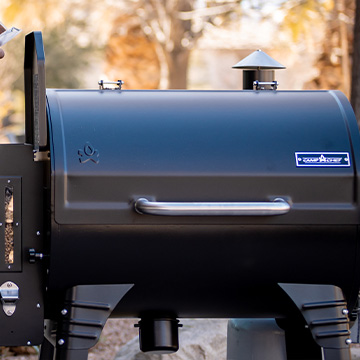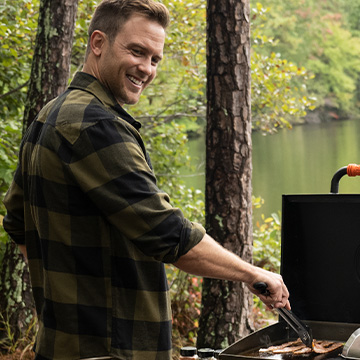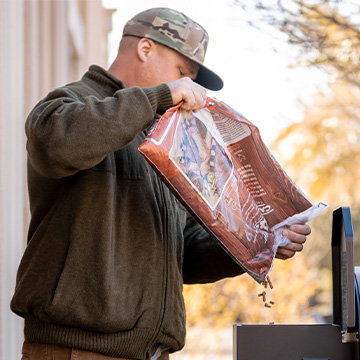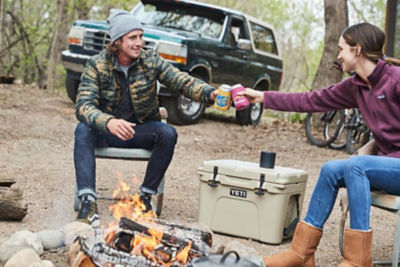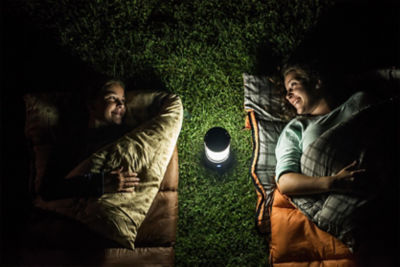Pellet Grill Guide
Gear up for grilling season with our guide to this outdoor cooking essential.
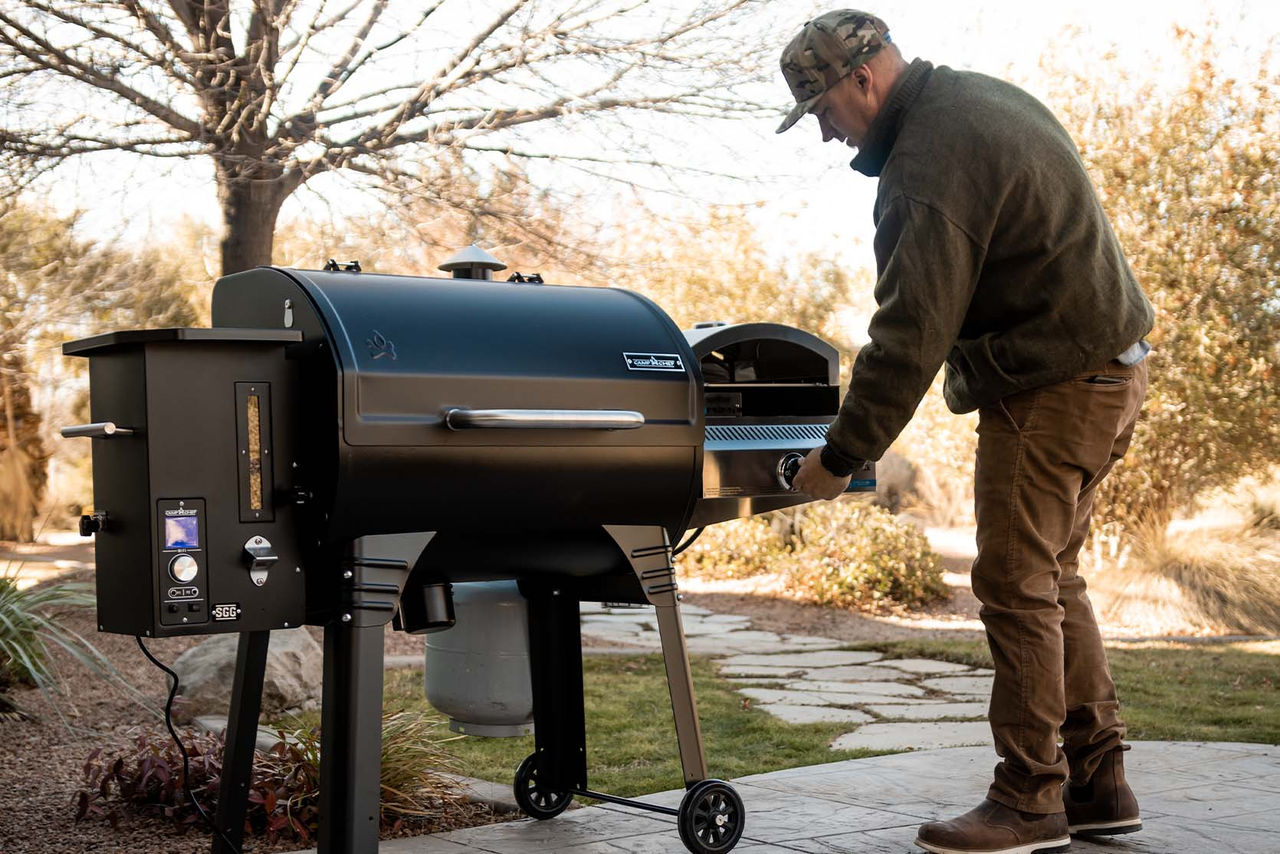
SO, WHAT EXACTLY IS A PELLET GRILL?
A pellet grill is more than a traditional grill. It’s got the capabilities to do pretty much anything your grill or even conventional oven could do – like smoking, baking, searing and grilling.
A pellet grill offers three advantages over other grills: convenience, mouthwatering flavor and unrivaled versatility.
First, a pellet grill uses digital temperature controls that let you set the heat and let your grill do the rest, so you can say goodbye to the days of hovering over a hot grill. This consistent performance of a pellet grill also means you’ll get the same wood-fired, smoky flavor every single time you cook. Finally, a pellet grill delivers versatility you won’t get with any other grill. With temperatures that range from 175°F up to 500°F, you can do anything from smoking briskets low and slow to baking pies and grilling burgers.
HOW DOES A PELLET GRILL WORK?
A pellet grill can be plugged into a standard household outlet to burn small, compressed wood pellets. As the first step, set the desired temperature using the digital controls. This will activate the grill to feed pellets into a burn cup where they will begin smoking. A heat diffuser plate helps disperse heat evenly throughout the grill for efficient cooking. A blower fan also helps disperse the heat throughout the grill’s body, similar to convection oven-style cooking.
Pairing the right pellets with the meal you’re cooking is key. The flavor is all about how strong the smoke is when burning pellets than it is the actual flavor of the wood. Mild pellet flavors suit delicate foods while strong pellet flavors enhance heartier dishes.
A 24-inch pellet grill will burn through roughly 3 lbs. of pellets per hour. You may need a little more or less, depending on if the temperature outdoors is warm or hot and what you’re cooking on the grill.
Take a closer look at a great option for adding a multi-purpose pellet grill to your outdoor cooking setup.
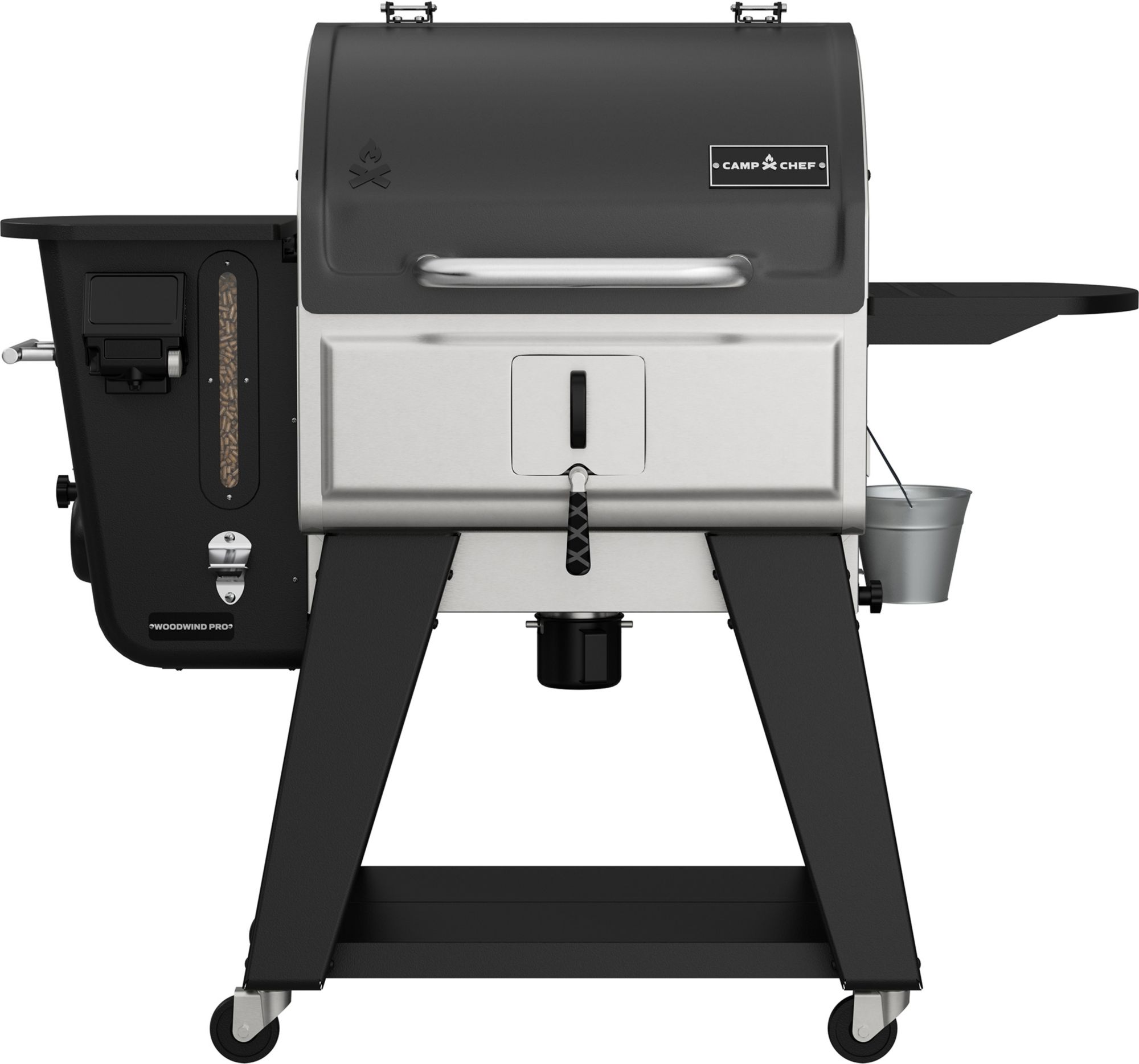
- WIFI controlled temperature and smoke
- Pellet removal system
- Heat ventilation
- Flavor enhancer smoke box
WHEN TO CLEAN YOUR PELLET GRILL
You’ll want to regularly clean your pellet grill so it’s in pristine condition to cook up that excellent taste you’re after. It’s also important to keep it clean of ash from pellets and grease from your food to avoid airflow problems and grease fires.
After every use, empty your ash cleanout, which is a knob typically found on the side of your pellet grill. This will keep ashes from accumulating and air flowing. It’s also a good idea to spot clean the lid, side shelf and cook racks between uses.
Generally speaking, it’s time for a deep clean after about 50 hours of smoking. It’s easiest to start from the top, down. You’ll also want to clean both the interior and exterior of the grill to keep it performing efficiently.
HOW TO SMOKE RIBS ON A PELLET GRILL
Ready for some smoking-good eats? Start with this easy three-step recipe from our friends at Camp Chef. These baby-back ribs are made with three hours of low-temp cooking time, two hours wrapped on the grill and one hour back on the smoker for a meal that will leave the whole crowd salivating for more.
Recipe: Smoked 321 Baby-Back Ribs
Homemade Rib Sauce:
1 cup Ketchup
1/2 cup mustard
½ cup maple syrup
3 tablespoons vinegar
1 teaspoon pepper
3 tablespoons hot sauce (optional)
Ingredients:
3 racks baby back or spare ribs
Your favorite Camp Chef BBQ Rub
Coarse salt
½ cup apple juice
1 ½ tablespoon mustard
1 ½ tablespoon maple syrup
1 cup Ketchup
1/2 cup mustard
½ cup maple syrup
3 tablespoons vinegar
1 teaspoon pepper
3 tablespoons hot sauce (optional)
Instructions:
- Rinse and dry the ribs and peel off the membrane on the concave side.
- Salt the ribs and let dry for an hour (optional);
- Mix apple juice, mustard and maple syrup in a spray bottle.
- Preheat your pellet grill or smoker to 225 degrees for a high smoke.
- Spritz the ribs using the mixture in the spray bottle.
- Cover completely and leave in smoker for about 3 hours.
- Spread glaze over the ribs and cover in aluminum foil; smoke for another 2 hours.
- Remove foil and cook for 1 hour, spreading more glaze over top.
- Ribs are ready when you can pick them up with tongs, give them a bounce and see a large crack on the surface of the meat.


